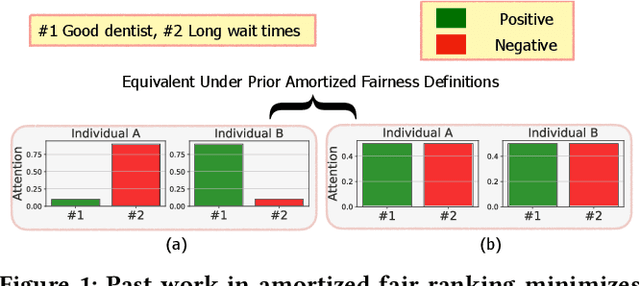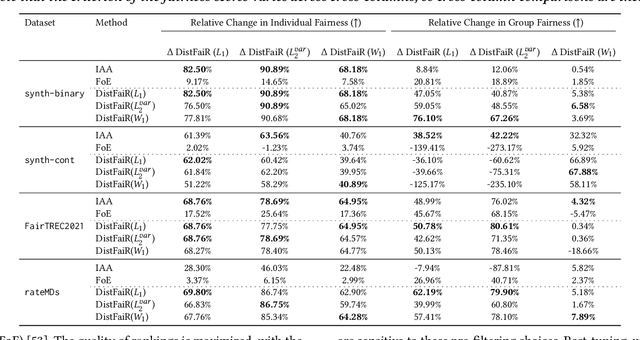Marzyeh Ghassemi
University of Toronto, Vector Institute
Train Long, Think Short: Curriculum Learning for Efficient Reasoning
Aug 12, 2025Abstract:Recent work on enhancing the reasoning abilities of large language models (LLMs) has introduced explicit length control as a means of constraining computational cost while preserving accuracy. However, existing approaches rely on fixed-length training budgets, which do not take advantage of the natural progression from exploration to compression during learning. In this work, we propose a curriculum learning strategy for length-controlled reasoning using Group Relative Policy Optimization (GRPO). Our method starts with generous token budgets and gradually tightens them over training, encouraging models to first discover effective solution strategies and then distill them into more concise reasoning traces. We augment GRPO with a reward function that balances three signals: task correctness (via verifier feedback), length efficiency, and formatting adherence (via structural tags). Experiments on GSM8K, MATH500, SVAMP, College Math, and GSM+ demonstrate that curriculum-based training consistently outperforms fixed-budget baselines at the same final budget, achieving higher accuracy and significantly improved token efficiency. We further ablate the impact of reward weighting and decay schedule design, showing that progressive constraint serves as a powerful inductive bias for training efficient reasoning models. Our code and checkpoints are released at: https://github.com/hammoudhasan/curriculum_grpo.
Tiered Agentic Oversight: A Hierarchical Multi-Agent System for AI Safety in Healthcare
Jun 14, 2025Abstract:Current large language models (LLMs), despite their power, can introduce safety risks in clinical settings due to limitations such as poor error detection and single point of failure. To address this, we propose Tiered Agentic Oversight (TAO), a hierarchical multi-agent framework that enhances AI safety through layered, automated supervision. Inspired by clinical hierarchies (e.g., nurse, physician, specialist), TAO conducts agent routing based on task complexity and agent roles. Leveraging automated inter- and intra-tier collaboration and role-playing, TAO creates a robust safety framework. Ablation studies reveal that TAO's superior performance is driven by its adaptive tiered architecture, which improves safety by over 3.2% compared to static single-tier configurations; the critical role of its lower tiers, particularly tier 1, whose removal most significantly impacts safety; and the strategic assignment of more advanced LLM to these initial tiers, which boosts performance by over 2% compared to less optimal allocations while achieving near-peak safety efficiently. These mechanisms enable TAO to outperform single-agent and multi-agent frameworks in 4 out of 5 healthcare safety benchmarks, showing up to an 8.2% improvement over the next-best methods in these evaluations. Finally, we validate TAO via an auxiliary clinician-in-the-loop study where integrating expert feedback improved TAO's accuracy in medical triage from 40% to 60%.
KScope: A Framework for Characterizing the Knowledge Status of Language Models
Jun 09, 2025Abstract:Characterizing a large language model's (LLM's) knowledge of a given question is challenging. As a result, prior work has primarily examined LLM behavior under knowledge conflicts, where the model's internal parametric memory contradicts information in the external context. However, this does not fully reflect how well the model knows the answer to the question. In this paper, we first introduce a taxonomy of five knowledge statuses based on the consistency and correctness of LLM knowledge modes. We then propose KScope, a hierarchical framework of statistical tests that progressively refines hypotheses about knowledge modes and characterizes LLM knowledge into one of these five statuses. We apply KScope to nine LLMs across four datasets and systematically establish: (1) Supporting context narrows knowledge gaps across models. (2) Context features related to difficulty, relevance, and familiarity drive successful knowledge updates. (3) LLMs exhibit similar feature preferences when partially correct or conflicted, but diverge sharply when consistently wrong. (4) Context summarization constrained by our feature analysis, together with enhanced credibility, further improves update effectiveness and generalizes across LLMs.
When Style Breaks Safety: Defending Language Models Against Superficial Style Alignment
Jun 09, 2025Abstract:Large language models (LLMs) can be prompted with specific styles (e.g., formatting responses as lists), including in jailbreak queries. Although these style patterns are semantically unrelated to the malicious intents behind jailbreak queries, their safety impact remains unclear. In this work, we seek to understand whether style patterns compromise LLM safety, how superficial style alignment increases model vulnerability, and how best to mitigate these risks during alignment. We evaluate 32 LLMs across seven jailbreak benchmarks, and find that malicious queries with style patterns inflate the attack success rate (ASR) for nearly all models. Notably, ASR inflation correlates with both the length of style patterns and the relative attention an LLM exhibits on them. We then investigate superficial style alignment, and find that fine-tuning with specific styles makes LLMs more vulnerable to jailbreaks of those same styles. Finally, we propose SafeStyle, a defense strategy that incorporates a small amount of safety training data augmented to match the distribution of style patterns in the fine-tuning data. Across three LLMs and five fine-tuning style settings, SafeStyle consistently outperforms baselines in maintaining LLM safety.
MedPAIR: Measuring Physicians and AI Relevance Alignment in Medical Question Answering
May 29, 2025Abstract:Large Language Models (LLMs) have demonstrated remarkable performance on various medical question-answering (QA) benchmarks, including standardized medical exams. However, correct answers alone do not ensure correct logic, and models may reach accurate conclusions through flawed processes. In this study, we introduce the MedPAIR (Medical Dataset Comparing Physicians and AI Relevance Estimation and Question Answering) dataset to evaluate how physician trainees and LLMs prioritize relevant information when answering QA questions. We obtain annotations on 1,300 QA pairs from 36 physician trainees, labeling each sentence within the question components for relevance. We compare these relevance estimates to those for LLMs, and further evaluate the impact of these "relevant" subsets on downstream task performance for both physician trainees and LLMs. We find that LLMs are frequently not aligned with the content relevance estimates of physician trainees. After filtering out physician trainee-labeled irrelevant sentences, accuracy improves for both the trainees and the LLMs. All LLM and physician trainee-labeled data are available at: http://medpair.csail.mit.edu/.
MOSAIC: Modeling Social AI for Content Dissemination and Regulation in Multi-Agent Simulations
Apr 10, 2025Abstract:We present a novel, open-source social network simulation framework, MOSAIC, where generative language agents predict user behaviors such as liking, sharing, and flagging content. This simulation combines LLM agents with a directed social graph to analyze emergent deception behaviors and gain a better understanding of how users determine the veracity of online social content. By constructing user representations from diverse fine-grained personas, our system enables multi-agent simulations that model content dissemination and engagement dynamics at scale. Within this framework, we evaluate three different content moderation strategies with simulated misinformation dissemination, and we find that they not only mitigate the spread of non-factual content but also increase user engagement. In addition, we analyze the trajectories of popular content in our simulations, and explore whether simulation agents' articulated reasoning for their social interactions truly aligns with their collective engagement patterns. We open-source our simulation software to encourage further research within AI and social sciences.
What's in a Query: Polarity-Aware Distribution-Based Fair Ranking
Feb 17, 2025



Abstract:Machine learning-driven rankings, where individuals (or items) are ranked in response to a query, mediate search exposure or attention in a variety of safety-critical settings. Thus, it is important to ensure that such rankings are fair. Under the goal of equal opportunity, attention allocated to an individual on a ranking interface should be proportional to their relevance across search queries. In this work, we examine amortized fair ranking -- where relevance and attention are cumulated over a sequence of user queries to make fair ranking more feasible in practice. Unlike prior methods that operate on expected amortized attention for each individual, we define new divergence-based measures for attention distribution-based fairness in ranking (DistFaiR), characterizing unfairness as the divergence between the distribution of attention and relevance corresponding to an individual over time. This allows us to propose new definitions of unfairness, which are more reliable at test time. Second, we prove that group fairness is upper-bounded by individual fairness under this definition for a useful class of divergence measures, and experimentally show that maximizing individual fairness through an integer linear programming-based optimization is often beneficial to group fairness. Lastly, we find that prior research in amortized fair ranking ignores critical information about queries, potentially leading to a fairwashing risk in practice by making rankings appear more fair than they actually are.
Speak Easy: Eliciting Harmful Jailbreaks from LLMs with Simple Interactions
Feb 06, 2025



Abstract:Despite extensive safety alignment efforts, large language models (LLMs) remain vulnerable to jailbreak attacks that elicit harmful behavior. While existing studies predominantly focus on attack methods that require technical expertise, two critical questions remain underexplored: (1) Are jailbroken responses truly useful in enabling average users to carry out harmful actions? (2) Do safety vulnerabilities exist in more common, simple human-LLM interactions? In this paper, we demonstrate that LLM responses most effectively facilitate harmful actions when they are both actionable and informative--two attributes easily elicited in multi-step, multilingual interactions. Using this insight, we propose HarmScore, a jailbreak metric that measures how effectively an LLM response enables harmful actions, and Speak Easy, a simple multi-step, multilingual attack framework. Notably, by incorporating Speak Easy into direct request and jailbreak baselines, we see an average absolute increase of 0.319 in Attack Success Rate and 0.426 in HarmScore in both open-source and proprietary LLMs across four safety benchmarks. Our work reveals a critical yet often overlooked vulnerability: Malicious users can easily exploit common interaction patterns for harmful intentions.
Vision-Language Models Do Not Understand Negation
Jan 16, 2025



Abstract:Many practical vision-language applications require models that understand negation, e.g., when using natural language to retrieve images which contain certain objects but not others. Despite advancements in vision-language models (VLMs) through large-scale training, their ability to comprehend negation remains underexplored. This study addresses the question: how well do current VLMs understand negation? We introduce NegBench, a new benchmark designed to evaluate negation understanding across 18 task variations and 79k examples spanning image, video, and medical datasets. The benchmark consists of two core tasks designed to evaluate negation understanding in diverse multimodal settings: Retrieval with Negation and Multiple Choice Questions with Negated Captions. Our evaluation reveals that modern VLMs struggle significantly with negation, often performing at chance level. To address these shortcomings, we explore a data-centric approach wherein we finetune CLIP models on large-scale synthetic datasets containing millions of negated captions. We show that this approach can result in a 10% increase in recall on negated queries and a 40% boost in accuracy on multiple-choice questions with negated captions.
Generative AI in Medicine
Dec 13, 2024

Abstract:The increased capabilities of generative AI have dramatically expanded its possible use cases in medicine. We provide a comprehensive overview of generative AI use cases for clinicians, patients, clinical trial organizers, researchers, and trainees. We then discuss the many challenges -- including maintaining privacy and security, improving transparency and interpretability, upholding equity, and rigorously evaluating models -- which must be overcome to realize this potential, and the open research directions they give rise to.
 Add to Chrome
Add to Chrome Add to Firefox
Add to Firefox Add to Edge
Add to Edge